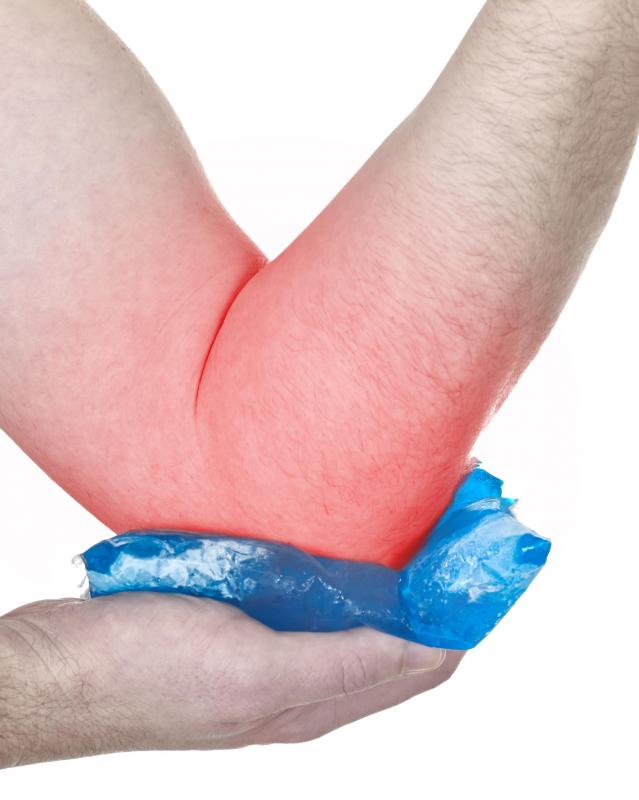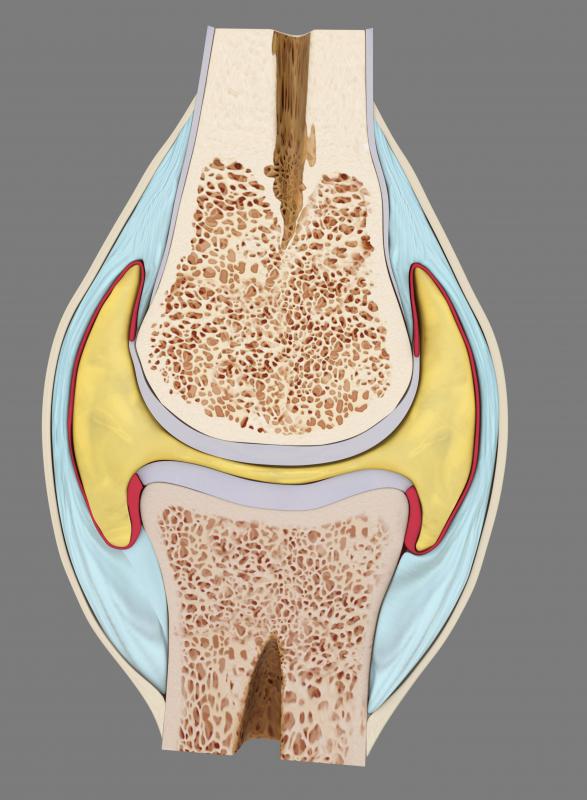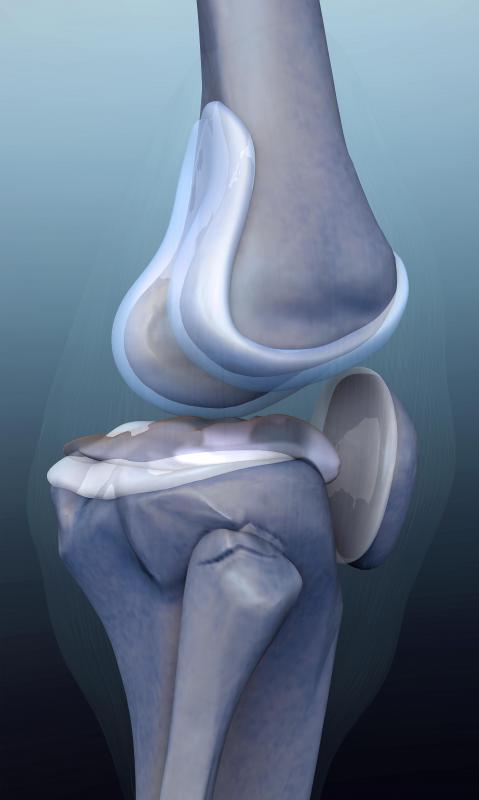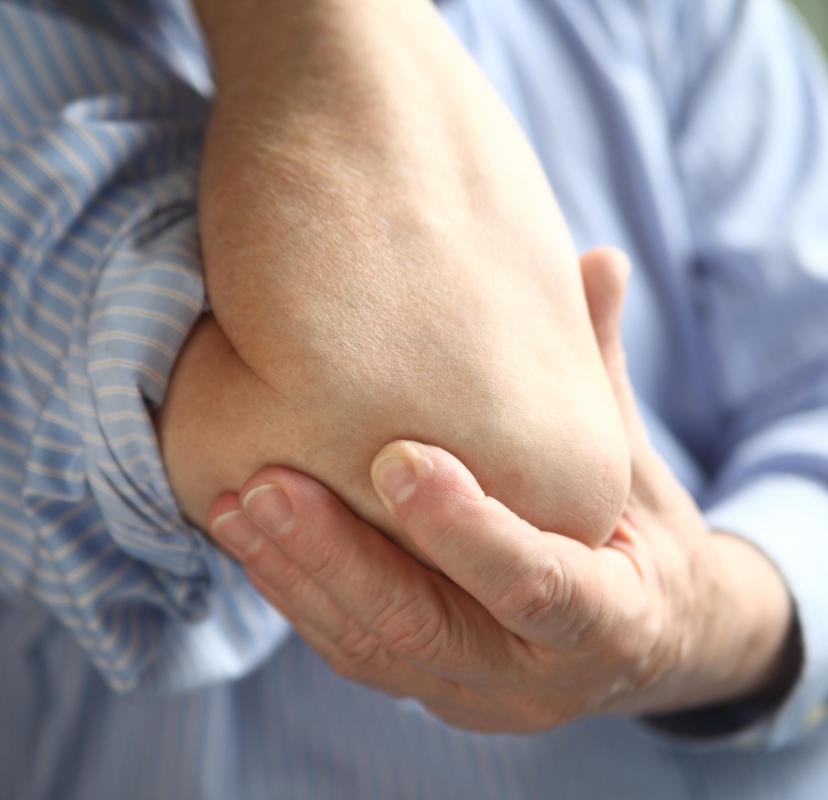At InfoBloom, we're committed to delivering accurate, trustworthy information. Our expert-authored content is rigorously fact-checked and sourced from credible authorities. Discover how we uphold the highest standards in providing you with reliable knowledge.
Is Cartilage Regeneration Possible?
There is some medical controversy over whether the human body can naturally regrow cartilage. The general consensus is that adults cannot regenerate cartilage, but it may be possible for children and teenagers who are still growing to do so at a slow rate. When the human body reaches its adult stage, cartilage has little to no blood supply, which greatly limits the body's ability to repair or regrow it.
Cartilage repair is showing new promise with recent medical research. The primary approach involves the implantation of a micro-scaffold made of natural materials into cartilage joint regions. This scaffold acts as a stimulant for cartilage cell growth, and it is absorbed by the body as the cells replace its structure.

Similar research is ongoing with hydrogels engineered at the nanotechnology level, or at sizes of a billionth of a meter. These are bioactive materials that assemble into a fibrous matrix that joint cells can attach to and grow upon. The materials used are designed to bind to growth factors for cartilage regeneration in the body as well, and stem cells located in nearby bone marrow stimulate collagen production that leads to new cartilage. Such research into treating cartilage problems, though very promising, is still in the animal testing phase and a few years away from human trials.

Current methods of cartilage regeneration, or to reduce knee pain where it is most often seen, do exist. They have limited effectiveness in some patients, and very good results in others. Most involve one of two approaches. Either cartilage cells are extracted from other locations in a patient's body and implanted into a region of cartilage loss, or compounds like chondroitin sulfate and glucosamine are injected into the site to alleviate joint inflammation.

Cartilage surgery is another attempt at cartilage regeneration, usually referred to as arthroscopy. In this approach, cartilage is removed from an area of the knee where there is no damage, processed into a paste, and injected back into the damaged region. Like treatments with glucosamine, it is known to reduce pain and inflammation, but cartilage regeneration from the process is limited.

Several other experimental methods for cartilage regeneration exist. One includes using growth hormones to stimulate cell production. It seems to be much more effective at treating ankles and elbows, with up to a 95% success rate, than it is at treating knees, with a 86% success rate, or hips at around a 50% success rate.
Research has also involved the approach of drilling minute holes in the bone near cartilage, known as microfracturing. This encourages the growth of blood vessels in the region. A hydrogel that forms a fibrous matrix is then injected into the region once again, and it stimulates the production of collagen. Other mechanical approaches to stimulating cartilage regeneration include using carbon nanotubes, which are cylindrical tubes billionths of a meter in length that could serve as a reinforcing agent for cartilage cell structures as they form.

Much of the current research into cartilage regeneration is in the testing phase. Almost every approach offers promise of treating joint pain in everything from elbows to shoulders and knees. As the procedures are perfected, they also offer promise at treating long-term cartilage degeneration in conditions such as osteoarthritis.
AS FEATURED ON:
AS FEATURED ON:




















Discussion Comments
My knees are very painful and like MRSPRAMM above, trying to go for walks each day is not happening. I wonder why medical science can develop a vaccine to kill a virus by adding to your DNA yet cannot fix joint problems.
If you ask a physician to help with your weight control, they totally refuse, stating it's just a matter of diet. While that is somewhat true, what is a person to do whose mobility is limited by arthritis? Starve for days on end to lose weight? There's an emotional pick up.
Also, I have high blood pressure and after years on Lisinopril and then Losartan, was finally put on a totally different family of drugs. The pain in my knees has been reduced gradually since the change and I'm wondering if there is a relationship. Drugs and their side effects are something overlooked many times. Meanwhile I' m praying for a sensible fix for arthritis.
Cartilage regeneration is possible using stem cells. I am living, breathing, elated proof! I am part of a clinical trial using microfracture and my own stem cells.
It is a 4 year study at an attempt to show the FDA that it works and I'm 2 years into it as of this month. My most recent MRI was completed in May and confirmed the formation of cartilage in the defect that was originally scanned pre-op.
Hallelujah!
@umbra21 - Well, that's not all we can do. People wouldn't need to repair cartilage if they didn't damage it in the first place. Overexercising can be one culprit, but under-exercising can do damage as well.
As life spans get longer, it is fairly inevitable that we will eventually wear out our cartilage, but the more care we take the longer it will last.
@MrsPramm - Well, there are other options like swimming. She might also try doing some upper body strength workouts, as this could lead to burning more calories.
Unfortunately, I don't think we're going to be able to get a safe, easy way to do cartilage replacement for a long time yet. It sounds like they are still mostly in the experimental stage with the various treatments.
I'm sure one day it will just be a standard procedure, but as for now, all we can do is wait.
I really hope that this kind of treatment eventually becomes completely viable. Especially for knee cartilage regeneration, because my mother really suffers from osteoarthritis in that area and I would love for her to get long term relief.
At the moment the doctors don't seem to be able to do anything for her. They basically just tell her that she needs to take pain medication and to lose some weight.
But how can you lose weight if your knees hurt so much that you can't walk very well? It's a Catch 22.
Post your comments